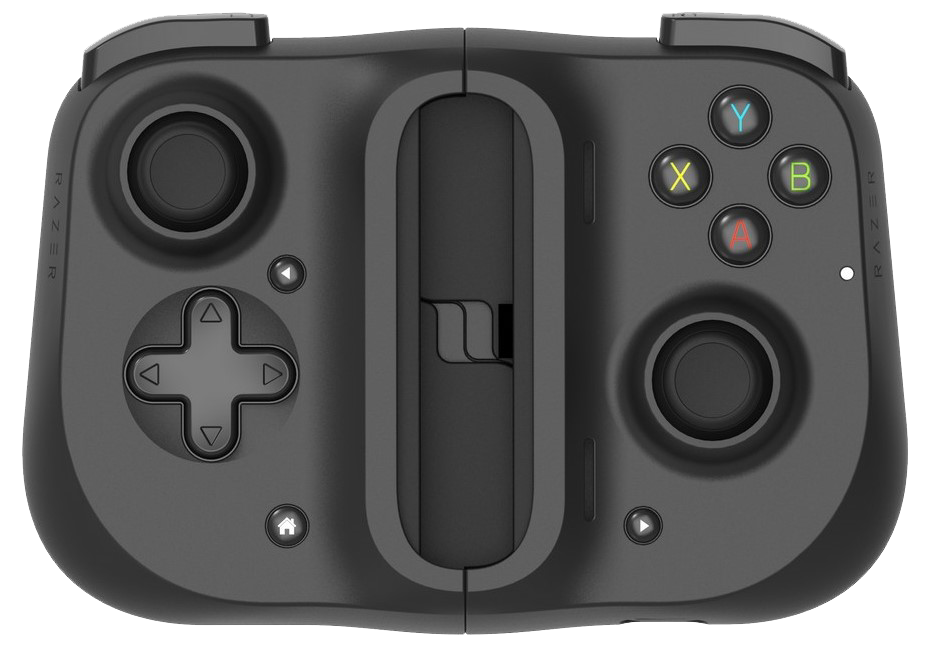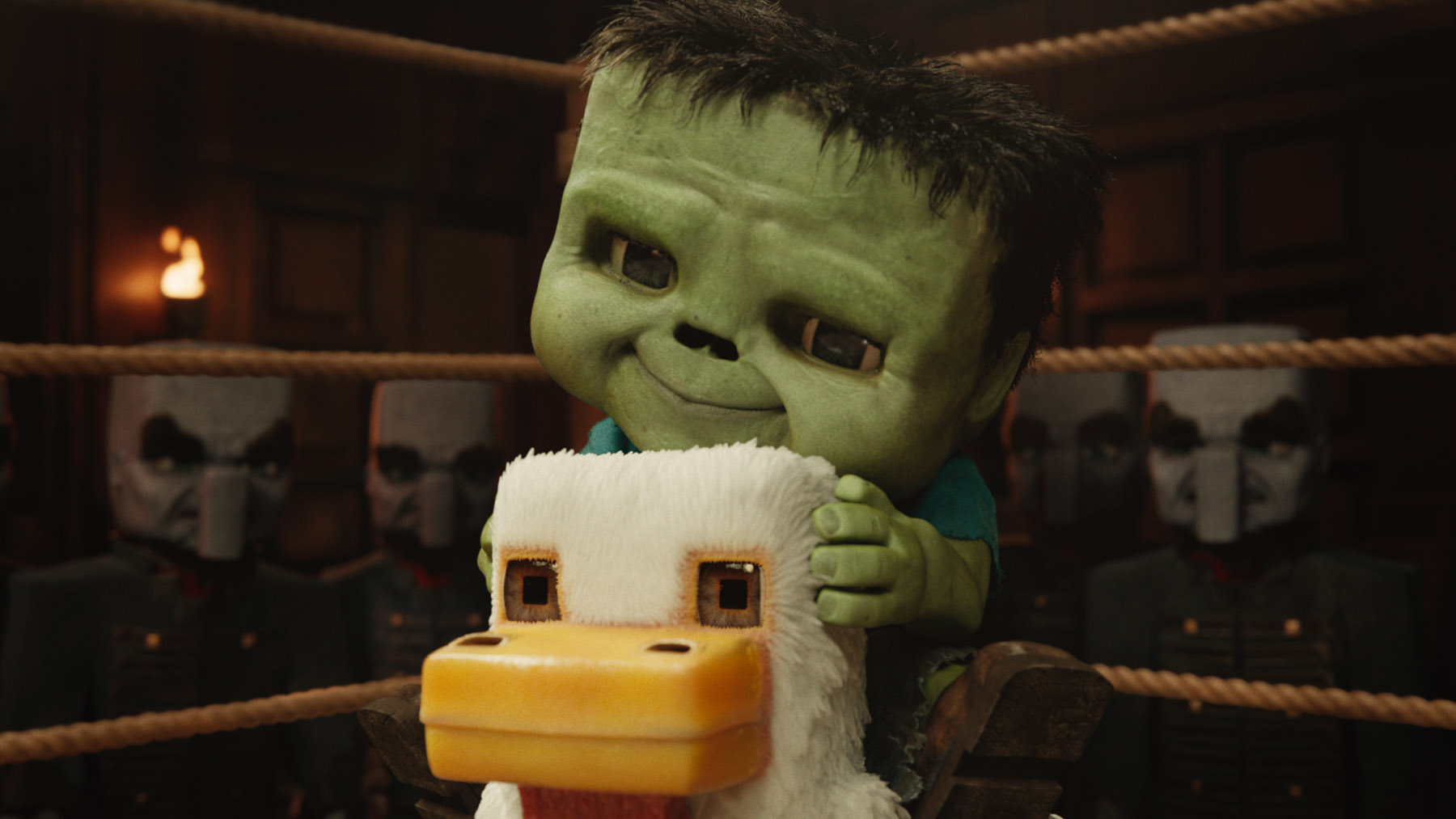Gaming on your phone sucks. No game has the same input system, virtual buttons on your phone never work the way they should, and the physical size of the phone makes it easy for your hands to cramp after extended use. If you have to turn your phone to landscape to play it, there's a good chance it's not going to be fun for particularly long. You can connect an Xbox controller over Bluetooth and dock your phone into it with a special clip (like the ones in our best Xbox phone clips roundup), but those controllers take up a lot of space in a bag and will never fit in your pocket.
Razer had a solid solution for this previously with its Junglecat controller, which split the traditional gamepad in half to be mounted on either side of your phone like a Nintendo Switch. The only real flaw in that Bluetooth controller was its physical limitation; it only really supported three or four phones. To really take off, something needed to work with many, many more devices.
Meet the Razer Kishi, a USB-C controller system that turns almost every major phone you can buy today into a killer gaming rig.

Bottom line: There are many ways to connect a controller to your phone, but Razer strikes the perfect balance between quality and portability with its new Kishi design. If you have an Android or iOS phone, this is what you want.
For
- Excellent build quality
- Fits many current-gen phones
- Functionally compact
Against
- Is not compatible with tablets, larger phones, or even smaller phones
- Rubber-insert design is cumbersome
Razer Kishi: Availability and price

The Razer Kishi is generally available for $70 in both Android and iOS configurations. It has dropped a bit from its initial launch price. It enjoys good availability too, available at Amazon, Razer, and many other retailers. The Razer Kishi often gets discounted for sales events like Black Friday and Amazon Prime Day, too.
Razer Kishi: What I love
Out of the box, this controller couldn't be easier to use. Two tabs on the back release the locking mechanism connecting the left and right sides, which allows you to wrap Kishi around your phone. The right side of the controller has the USB-C port right in the center, making it easy to just plug your phone in and wrap the other side around. The flat section connecting the two halves has an elastic quality, so you can add anything from the smaller Pixel 4 to the Galaxy S20 Ultra and have the same basic experience once the other side is connected. No special cases or weird adaptors are required. Just wrap this controller around your phone, and you're done. There's even a USB-C port on the bottom of the controller itself so you can charge your phone while you play.
Razer nailed it with the Kishi, and it's going to make a lot of gamers very happy.
Once you have your controller connected to your phone, Kishi elevates your gaming experience in a way nothing else available today can. This is a complete Xbox controller wrapped around your phone, which instantly works with everything from Asphalt 9 in the Google Play Store to Xbox Cloud Gaming and Google Stadia without issue. It requires no special settings to toggle so the gamepad can work, none at all. USB-C on your phone immediately detects it as a gamepad, and it just starts working. Even though some games and apps have dialogue boxes explicitly aimed at using a Bluetooth controller, Kishi just works.
Functionality is essential, but Kishi is also super comfortable. Unlike the Junglecat, the buttons on this are laid out just like an Xbox controller. The triggers have a fantastic amount of resistance, the joysticks feel perfect, and every button set has its own distinct feel. The D-pad feels different from the Start and Select buttons, which feel different from the action buttons. You can easily pick this up and feel right at home, with very little time spent re-learning the spaces between buttons and needing to learn muscle memory.

When you're done using Kishi, it's super easy to stow away. The two halves connect and lock into place, making the Kishi much smaller and flatter than your average Xbox controller. It technically does fit in my front jeans pocket, but I wouldn't exactly call it pocketable. But it fits much better in a bag or the center console of my car, so I can enjoy some gaming while someone else drives or while waiting for someone in a parking lot. And, of course, with Xbox Game Pass' cloud and Stadia, it's excellent for enjoying my favorite games no matter where I am.
It looks great. It feels great. It works with the vast majority of contemporary phones. It doesn't kill my battery. There's not much more to say here; Razer absolutely nailed it with the Kishi, and it's going to make a lot of gamers very happy.
Razer Kishi: What I wish was better

If you've got an enormous phone, like a Samsung Galaxy Note or Razer Phone 2, you'll probably never notice any problems with the design of the Kishi. If you have a smaller phone, like the smallest Samsung Galaxy S20, you may notice a wobble on the left-hand side of the Kishi.
Because the phone doesn't line up on the side grooves on the controller edge, it's easy to rock that entire side of the controller back and forth as you play. There's never any concern you might damage the phone or disconnect the controller, but when you're playing for a while, that wobble can be a little distracting. Ideally, you'll want to check that your phone has recommended compatibility on Razer's website before diving in. Smaller phones really aren't a great experience on this thing.

Kishi is not the size of an Xbox controller, which is great for portability, but that means the all-important flared handle grips Microsoft has spent so many iterations perfecting are also missing. Hand cramping isn't a guarantee with every game, but after an hour of gameplay in Ace Combat 7 through Xbox Game Pass, I needed a break. Again, probably not something that will impact most people, but something worth keeping in mind as you play.
Since we're spending time noting small issues with this controller, a little splash of color wouldn't be the worst thing every for future versions. This is a great controller, but it looks like just about everything else when you go to play. I would love to see some options in the future.
Razer Kishi: The Competition


Source: Matt Brown | Windows Central and Windows Central
The Razer Kishi was an innovator when it launched, but since then, it has gotten some serious competition across the board. The GameSir X2 is probably the closest competitor. GameSir's product beats the Razer Kishi with its clamp design. The Kishi's strap design with rubber inserts only fits a small subset of phones. The GameSir X2 has a large adjustable design with rubber grips, and can fit virtually any USB-C device as a result. I would argue the GameSir X2 is probably too small, though, and noticeably less comfortable over long periods than the Kishi.
In addition, you also have the Backbone, currently iOS-exclusive, but coming later to Android. The Backbone is more expensive, but it has next-level quality and features that arguably make it the best on the market. Sadly, though, it's iOS-only as of writing.
Should you buy it? Hell yes.
If you play games on your phone in landscape mode, and you don't own a Razer Kishi, you are making your hands sad. This is a revelation after so many other companies have tried something similar but not truly hit the mark. I am very excited never to need to clip my phone to the top of an Xbox controller ever again, and I am positive you will feel the same way. And for $70, the Kishi isn't going to kill your wallet.
Get this controller; you will be so much happier with your gaming experience. Just make sure your handset is listed as compatible before doing so.
Russell is a tech nerd who chases the best of everything, from phones to game consoles to laptops and everything glowing or beeping. He's the Managing Editor of gaming content for Mobile Nations and can be found contributing to all of the Mobile Nations sites. Reach out on Twitter!


